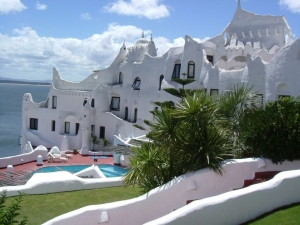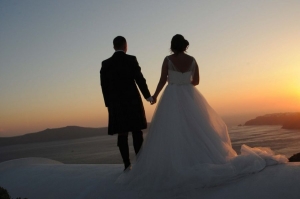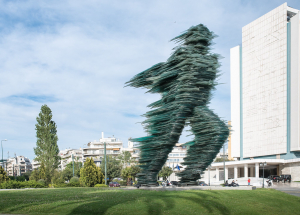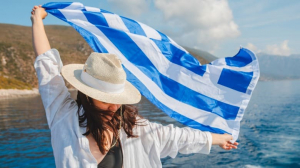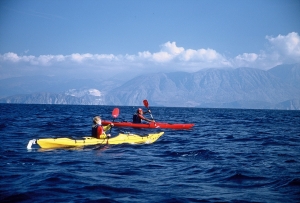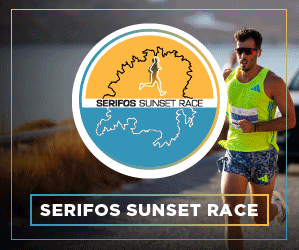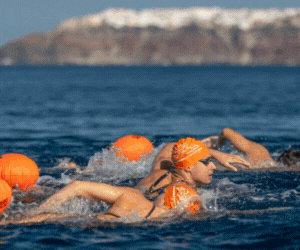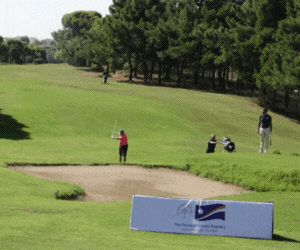English Tradition: Open presents before lunch
Greek Tradition: Open presents whenever curiosity gets the better of you, or just don't give them until New Year
English Tradition: Pork, pork, and more pork - glazed gammon, pork stuffing, bacon on the turkey
Greek Tradition: Chicken liver stuffing
English Tradition: Avoid an argument by getting drunk so you can pretend you don't remember it
Greek Tradition: Embrace the argument, add bells, whistles, and volume, then pack it away neatly for next year
English Tradition: Board games around an open fire
Greek Tradition: Boredom around a heap of foodstuffs
English Tradition: Pretending to hate Christmas so as to appear cool
Greek Tradition: Actually hating Christmas but pretending to enjoy it "for the children". Even when they're in their forties
Enjoy the holidays, everyone!
XpatAthens
Casapueblo - The Santorini Of Latin America
Located on a high rocky point jutting over the sparkling water in Punta Ballena, Uruguay, sits the Casapueblo, a magical sculptured hotel/museum that is often mentioned as the Greek island of Uruguay, or, the Santorini of Latin America.
It is the structure’s Cycladic-inspired architecture, combined with Punta Ballena’s amazing sunset view that makes it look like a small village on the island of Santorini in Greece.
The structure that is a short 15-minute drive from Punta del Este, was built by the famous Uruguayan artist Carlos Páez Vilaró. Today, it is a museum, art gallery, and hotel that welcomes thousands of visitors every year.
This complex looks like nothing else in South America. As you explore the winding cave-like corridors containing artifacts and unusual lighting, it gives you a mysterious feeling — and getting lost here is an entertaining experience. There are no room numbers on doors, since the hand-painted tiles on your key match your door tiles — each room is different.
To read more, please visit greekreporter.com
By Anastasios Papapostolou
English vs Greek Christmas Traditions
English Tradition: Complain about going to see the parents
Greek Tradition: Of course we'll be with the parents. But, what's the big deal, we see them every week anyway
English Tradition: Arrive hungover, eat until upright, and then pickle oneself horizontal again.
Greek Tradition: Arrive hungry, pick at everything while it's cooking, complain you're too full to eat, eat anyway, and then fall asleep in front of the telly
English Tradition: Watch the Queen's speech
Greek Tradition: Complain about the pointlessness of the monarchy
All The More Say "I Do" In Greece
The Athenian - Authentic Greek Souvlaki In London
Sculpture Culture: Urban Statues In Athens For Your Instagram
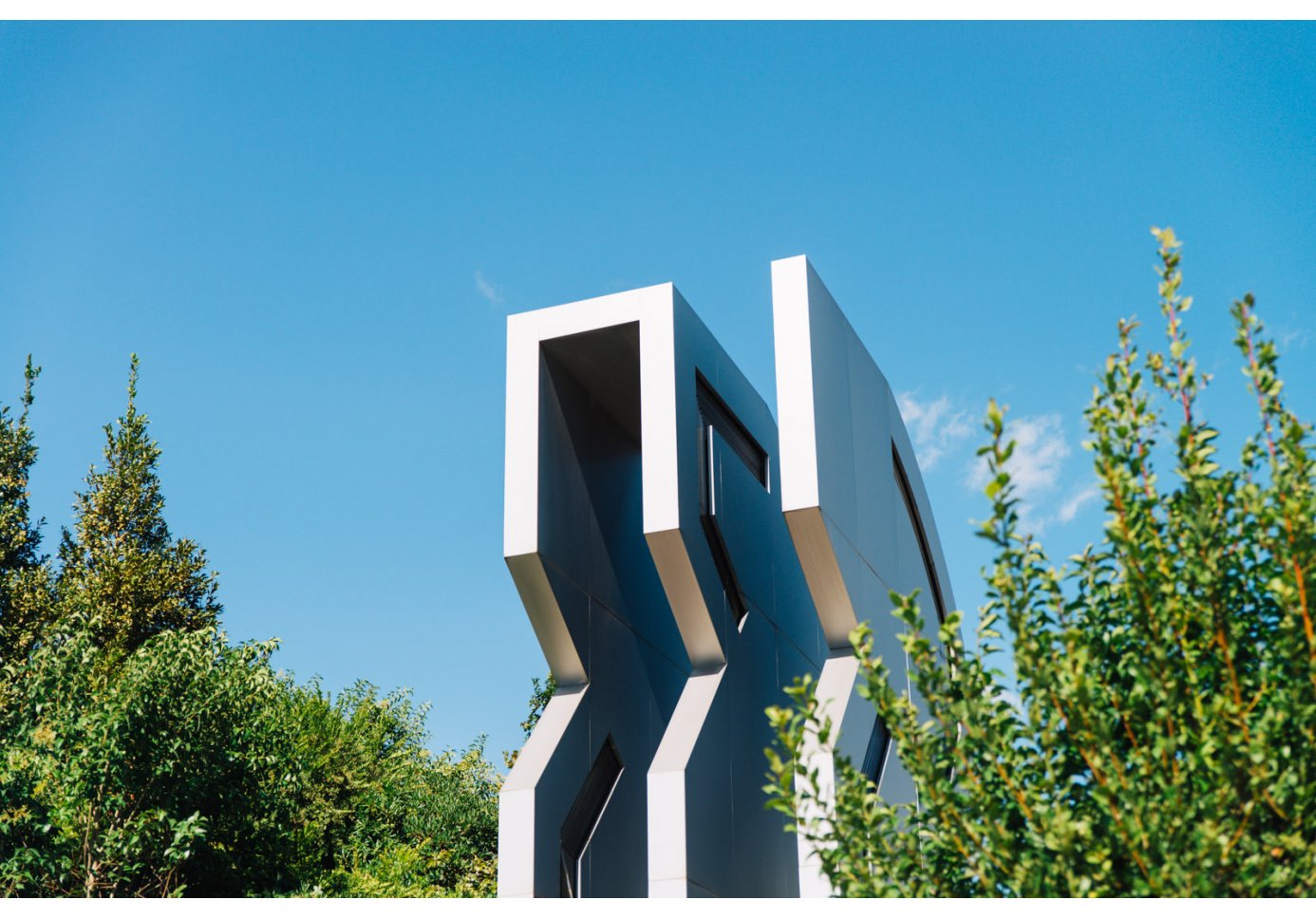
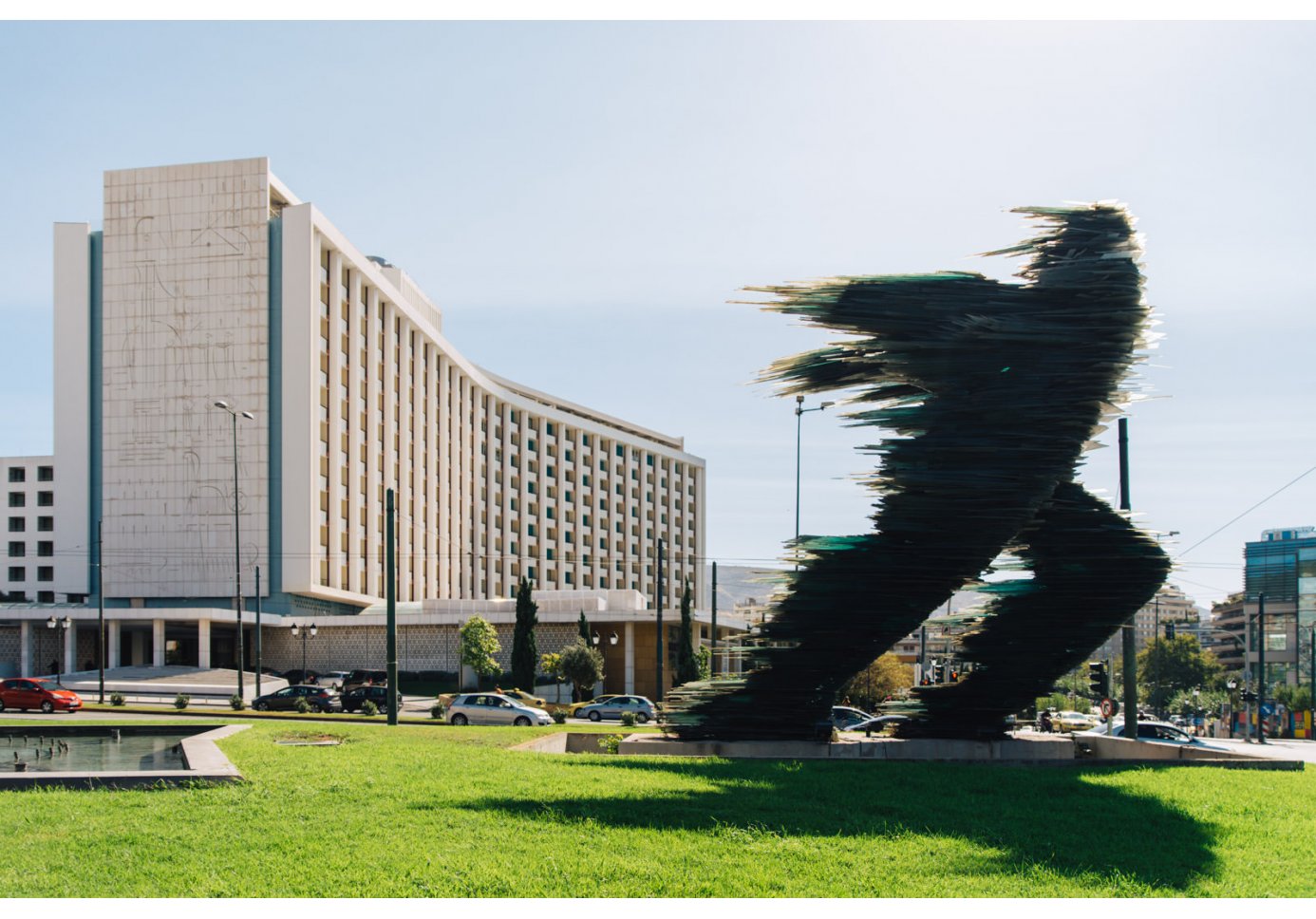
Photo Credit: Thomas Gravanis
The eight-meter-high figure of a runner formed by staggered plates of green glass is as much a feat of engineering as aesthetics. It’s by no means the only work of sculptor Costas Varotsos, a Fulbright scholar, but it’s certainly the most visible and best-known. Originally installed in Omonia in 1988, this highly-snappable landmark was moved to its current location in 1994. It’s an apt site as it signals runners on the Athens Classic Marathon that they’re just minutes from the finish line. By using a universal symbol—the human form in perpetual motion—Varotsos makes post-modernist art more relatable to the public, underscoring his belief in art’s dynamic as a vehicle for social change.
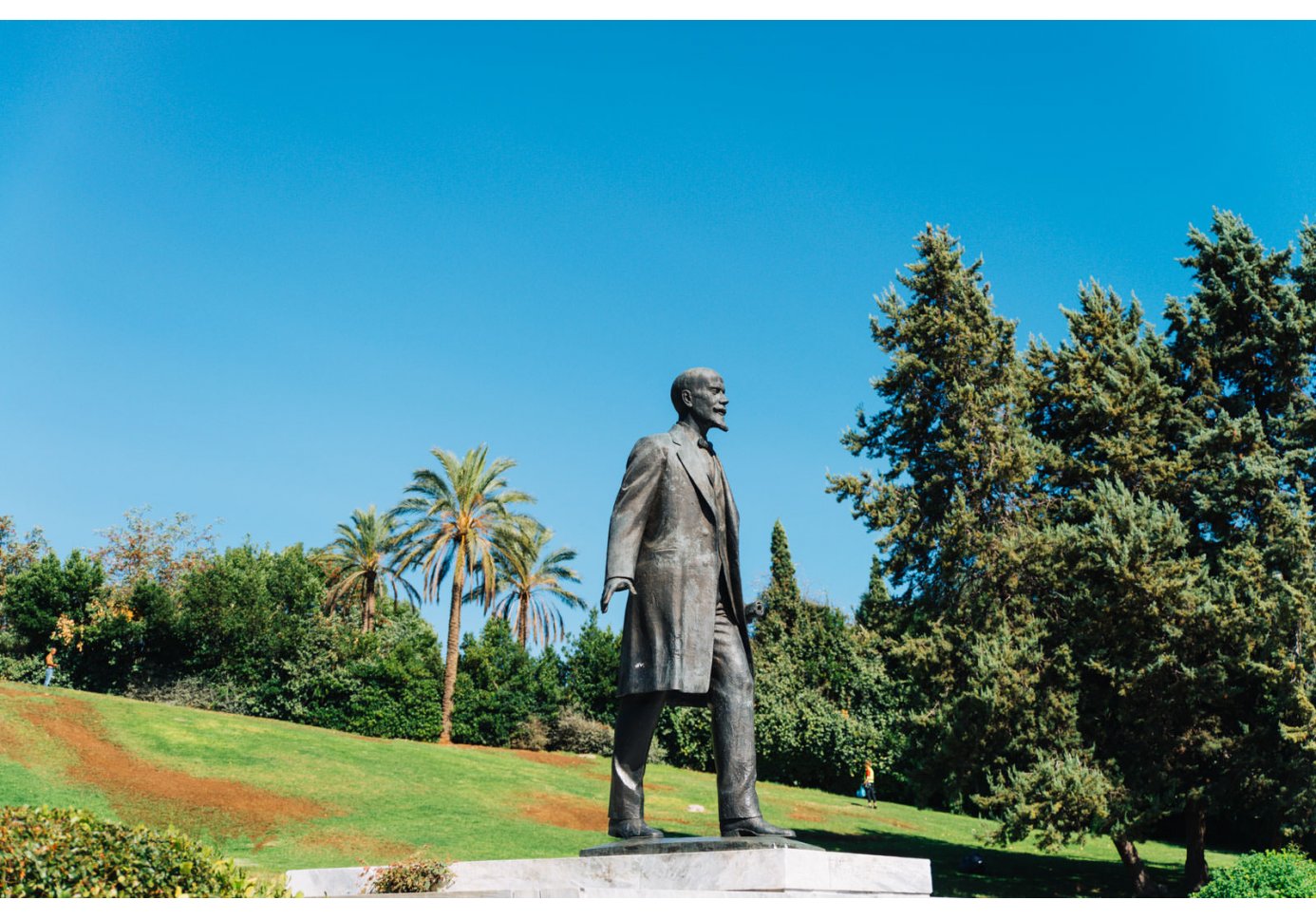
Photo Credit: Thomas Gravanis
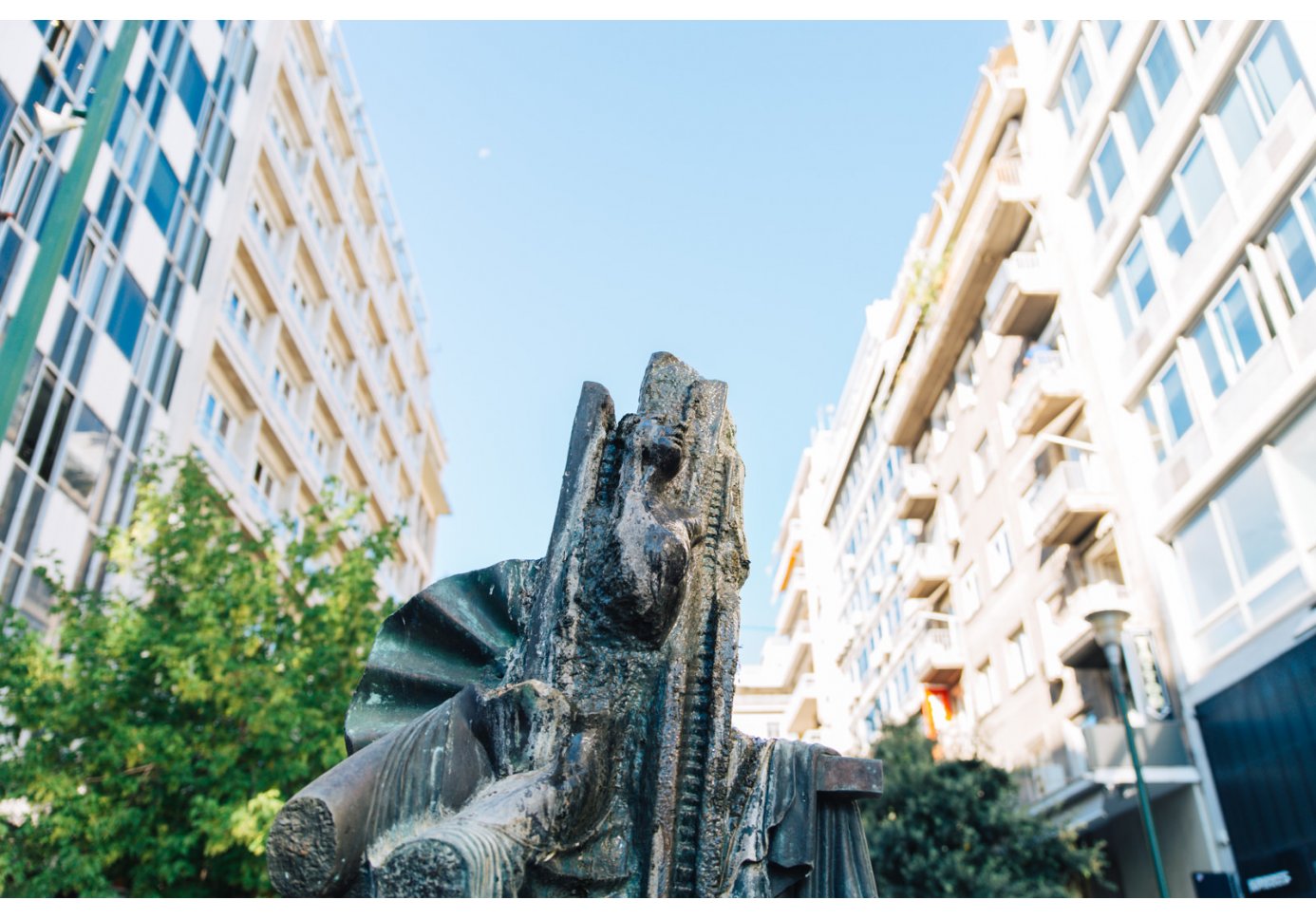
Photo Credit: Thomas Gravanis
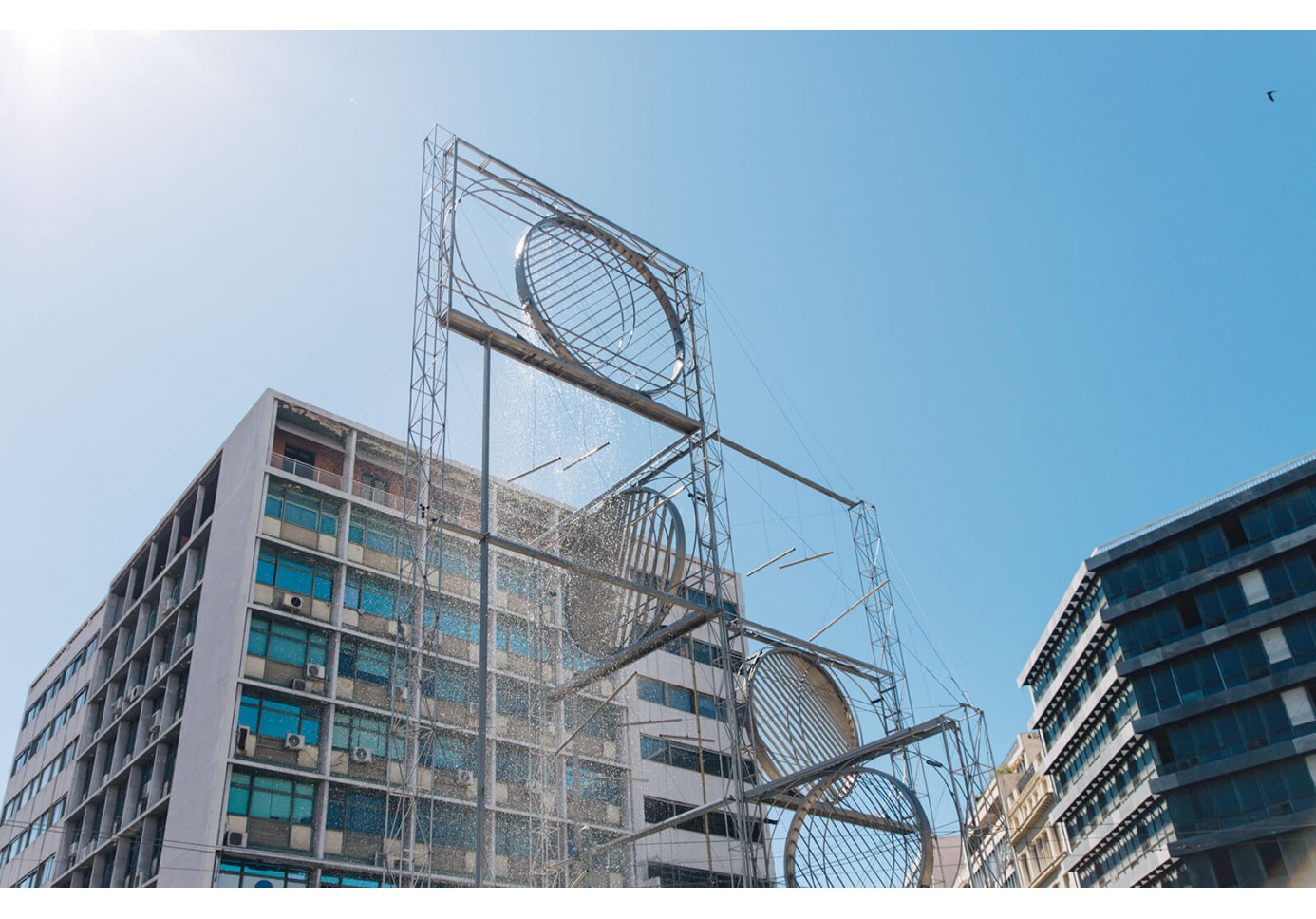
Photo Credit: Thomas Gravanis
Whether you've just arrived in town – or have been here for years – Athens always has new secrets to share!
Traditional Greek Winter Dishes
Greek cuisine is humble and simple, with a focus on fresh, healthy, and tasty ingredients, including vegetables and herbs, and that applies both to light and heartier dishes.
Since it is rather cold outside, here is a small list of traditional Greek winter staple dishes you should definitely try!
Fasolada
@toxwrioudaki
Fasolada is a traditional Greek bean soup – a very easy-to-make vegetarian recipe. This thick soup is traditionally made with white beans cooked with olive oil, onions, carrots, tomatoes, and celery. An all-time classic Greek winter staple, perfect for warming the body!
Meatball Soup - Giouvarlakia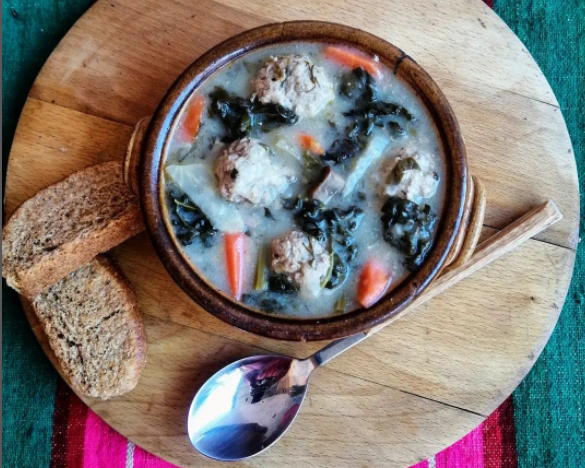
@aikaterineapostolake
Another Greek comfort food, giouvarlakia is the ideal dish to keep you warm. It's a tasty meatball soup finished off with the infamous egg-lemon sauce (avgolemono) and complemented with vegetables of your liking. If you want to experiment a little bit, you can also try out the alternative version with tomato sauce.
Spetsofai 
@agnomarket_meat
Yet another wintertime favorite, Spetsofai is a traditional dish originating from Pelion, the scenic mountain village of Thessaly. Made with country sausages and peppers cooked in a thick tomato sauce, this delicious dish is perfectly paired with feta cheese and a slice of bread to dip in the sauce. Eggplants are used in the original recipe, and in some areas, hot paprika and red hot chili peppers are used instead of ordinary peppers. It's a must-try, regardless of which version you make.
Chicken Soup - Kotosoupa
@olivemagazine_gr
Kotosoupa avgolemono (chicken soup with egg-lemon sauce), another Greek winter classic, is commonly served on cold days. It's very easy to cook; it's just chicken soup with rice and a lot of egg-lemon sauce. Not to mention that it is also used as a remedy to treat the common cold!
How To Become A Greek Citizen: A Guide To Naturalization
Greece is more than a beloved travel destination; it’s also a country that offers the security, opportunity, and cultural richness of EU citizenship. With a Greek passport, you gain the right to live and work not only in Greece but anywhere in the European Union. While many pursue citizenship through descent, naturalization offers another powerful path, open to anyone who meets the legal requirements, regardless of heritage.
Greek citizenship through naturalization is available to foreign nationals who satisfy a number of legal conditions. To apply, you must:
- Be at least 18 years old
- Have no irrevocable convictions for serious crimes in the past 10 years
- Prove continuous legal residence in Greece:
- 7 years for general applicants
- 5 years if residency began before March 24, 2010
- 3 years if you're an EU national, married to a Greek citizen, a parent of a Greek minor, or a recognized refugee/stateless person
- Hold a valid Greek residence permit (e.g., long-term permits, EU/EFTA family cards, refugee certificates)
Your application must be supported by a complete and properly certified file. Key documents include:
- Naturalization Statement signed at your local municipality, in front of two Greek witnesses
- Valid passport and residence permit
- Certified birth certificate, translated into Greek
- Proof of income or tax return from the previous year
- Greek social security number (AMKA)
- Certified translations and authentications of all foreign documents
The road to Greek citizenship involves several official steps:
- Sign and submit the Naturalization Statement
- Collect and file all required documentation
- Demonstrate continuous, legal residency
- Take language and integration assessments
- Complete an interview with the Naturalization Committee
- Await the committee’s decision
- If successful, take the oath of allegiance and be registered as a Greek citizen
The interview is a critical part of the process. It assesses:
- Language proficiency – both verbal and written Greek
- Knowledge of Greece – its history, culture, and democratic system
- Personal background – your life in Greece, reasons for applying, and long-term intentions
- Community ties – evidence of social and cultural integration
While it’s possible to apply on your own, working with a legal expert like Expat Law can save time, prevent costly mistakes, and increase your chances of approval. Their team provides:
- Up-to-date guidance on all legal requirements
- A customized application strategy based on your background
- Careful review of documents to avoid delays
- Representation in legal proceedings if needed
- Full support from start to finish
End-to-end assistance tailored to your case:
- Document preparation and legal verification
- Application submission and follow-up with authorities
- Legal representation in appeals or complex scenarios
- Ongoing guidance throughout the process
New Year, New Resolutions?
Does anyone go out for New Year's Eve anymore? Apparently, plenty do! My New Year's Eve happened at the last minute, with a few messages and rushed phone calls: "Are you doing anything? What should we do? Is it too late? Let's go!" In the end, four friends ventured out for a fun evening. Now, truth be told, I have been known to boycott new year's eve in the past. I feel it is too 'manufactured' and too over-priced. Why would I pay 45 euros for a dinner that I could get the day before for 20?
Nonetheless, fun energy being as contagious as it is, all thoughts of boycott leave my mind the moment we step out.
We headed for Psirri around 9:30pm to find a place for dinner. The streets seemed to be deserted, and I thought, "Crisis has kept people at home." Not true! It seems we were about 30mins too early. Each restaurant we checked was either already full, or booked up solid for the evening - even with ?45-55 price tags for dinner. We eventually found a table at a nice-ish place, with live music and a ?45 price tag.
After midnight struck, and we made our wishes for 2014, we paid our bill and left to our next destination.
For those who have not done New Years Eve in Athens, all the action happens well after midnight. Many places don't even open until 12:30. By this time, the city was positively hopping with people!
We had frantically bought last-minute tickets to a live music show at Gazarte in Gazi. The line-up was Penny & The Swingin Cats with The Great Big Band. The place quickly filled up around 1:00am, and the show was great - big band standards, rock'n'roll, and even some of their original stuff. I really enjoyed them - great vocals, great energy, lots of fun. Look out for their upcoming gigs!
I decided not to make any new year resolutions this year. Since I'm still working on last year's resolutions (not to mention 2012 and some of 2011), I figured I'd give it a rest for 2014. I'm just happy seeing oranges growing on the trees in January! The rest will be a bonus ;)
I hope this year brings smiles and laughter and lots of sunny days to everyone out there! Καλή χρονιά σε όλους!
Until next week,
Jack
In this weekly space, keep up with ‘Jack’ as he navigates daily life in Athens… Anecdotes, stories, hits & misses, the good, the bad and, well, the rest…
Sea Kayaking In Spinalonga Bay
Standing on the seashore of Plaka, a hamlet 16 kilometers north of Agio Nikolaos in eastern Crete, the island of Spinalonga looks invitingly close. Just a hop, skip and a jump away by sea kayak—or so it seemed. Spinalonga is a spit of land situated at the mouth of Spinalonga Bay.
Strategic since antiquity, in 1579 the Venetians erected a gargantuan fortress befitting of their superpower status, and indeed, its protectors defied Turkish conquest for several decades longer than any other Cretan garrison. The fort finally fell to Ottoman rule in 1715.
On a warm October day our cozy group of four Americans and four Greeks planned to kayak over to Spinalonga Island. From there, we would head down its bay, a short portage, then down Poros Bay to Agio Nikolaos. At most, the trip was fifteen kilometers.
From Plaka, a local fisherman can probably make the voyage to Spinalonga Island in about twenty minutes. It took my best friend Pia and me about two hours.
Pia and I had never kayaked. Our initial hour was spent on land just trying to get a grasp of this sport and its paraphernalia. We donned life jackets, colorful wetsuits and learned how to put on a “kayak skirt.” This is a sturdy cloth worn around your waist: when seated in your kayak, you attach the skirt’s hem to the open perimeter of your seat so that water doesn’t enter the boat. Next were some rudimentary rowing lessons. We sat on the beach, pretending we were at sea, and went through the motions of manipulating the paddles.
Pia and I reasoned that, being first-time kayakers, we should operate the two-seater. Wrong. We didn’t know when to paddle, how to coordinate our rowing or even which direction to face when a strong wind blew. Not but fifteen minutes after setting out to sea, one moment we were dry, the next moment we were wet. The boat capsized so suddenly we didn’t even have a chance to shout the proverbial “Man Overboard!” Sobered by the incident, we took our friends’ advice and got our own kayaks, and discovered that individual navigation was superior to teamwork, at least when the team was clueless in the art of kayaking.
When we arrived to Spinalonga Island some of us were quite wet and all of us looked a little goofy in our loudly colored kayak mini-skirts. The tourists stared, mostly at Miltos. While our skirts laid flat, his undulated with a flamboyant pink hem akin to an Argentine tango costume that got shrunk at the cleaners. For some reason, he kept it on during our entire visit to Spinalonga which prompted endless guffawing.
After Crete formally united with Greece in 1913, Spinalonga became a leper colony and remained so until 1957. The island is larger than expected when you peer at it from the Crete mainland. One can easily spend several hours strolling its pathways and perimeters. The elegant Venetian architecture—curved arched portals, for example—contributes to Spinalonga’s beauty, yet a haunting feeling pervades,perhaps attributable to the cemetery whose open graves bear the assumingly impaired bones of the prior inhabitants.
My afternoon kayaking was far more successful once I got the hang of it. And the disappearance of the winds helped appreciably. Our group soared along pretty much all together instead of scattered leagues apart as we had been during the morning. The scenery in Spinalonga Bay is breathtakingly spectacular -- mountains in the distance on a blinding shiny blue sea devoid of any other seafarers except the eight of us. The rock cliffs on the coast mesmerized me: they were wavy, in layers, like slabs of thick uncooked bacon stacked on top of one another, truly of postcard caliber. One area we paddled to was peculiar as it felt sheltered like inside a cave but actually we were in an open area on the sea.
If you are inclined towards a little physical activity while vacationing, I heartily recommend sea kayaking in Spinalonga Bay. Beginners can complete the journey from Plaka to Agio Nikalao, with a pit stop on the island, easily in one day. By the end of your adventure, you will feel exhilarated by the aquatic workout and gain yet another reason to place Crete high on your list of magnificent Mediterranean islands.
By Colleen McGuire
Managing Director of cyclegreece.gr
G. Logothetis: “2014 is the Year of Greek Growth”
Libra Group CEO and Chairman George Logothetis is a firm believer that Greece is on the right track to gain back its lost reputation and start attracting investments. Logothetis has shown his confidence in the country not only in his speeches, but also by buying assets and investing in Greece for the past three years.
Speaking to Fox business from the World Economic Forum in Davos, Logothetis appeared more optimistic than ever before as he called 2014 the year of Greek growth.
He stressed that in Greece there is not just a crisis, but also opportunities, and “from now on we should talk more about the Greek opportunities and less about the Greek crisis.”
“As a Greek, I have a duty to help Greece, and the marriage of that duty and opportunity is a powerful force,” said Logothetis.
Libra, which includes 30 subsidiaries, spans 26 locations across four continents. The Group predominantly focuses on shipping, aviation, real estate, hospitality and renewable energy. George Logothetis first joined his family’s shipping company in 1993, becoming CEO a year later at the age of 19. In the ensuing years he presided over the company’s transformation from three vessels into a fleet of 55. He created the Libra Group as a means of diversifying the family’s business which was facilitated by the sale of 67 vessels between 2004 and 2007.
Libra Group has purchased around $5 billion of assets globally since a worldwide recession in 2008, and is stepping up investments in Greece, especially in the hotel and renewable energy sectors, Logothetis has previously stated.
Libra recently launched the Hellenic Entrepreneurship Award, which offers entrepreneurs in Greece the chance to receive funding of up to €500,000 plus comprehensive mentoring and consultancy for a new business venture.
By Anastasios Papapostolou


